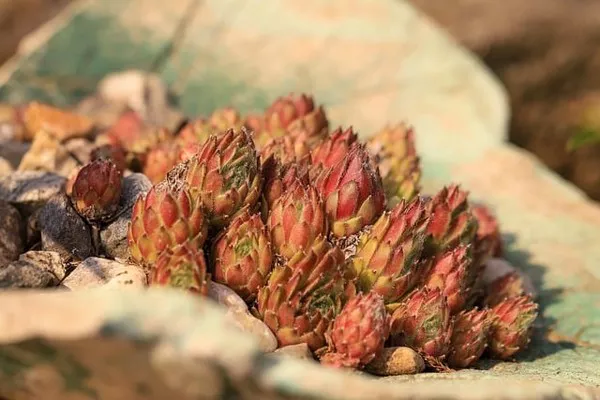Succulents are beloved for their striking appearance, low maintenance, and ability to thrive in various environments. One of the most rewarding experiences for succulent enthusiasts is propagating new plants from cuttings. While it may seem intimidating at first, with the right techniques, planting fresh cut succulents can be a straightforward and enjoyable process. In this guide, we will walk you through the essential steps to successfully plant fresh cut succulents, from preparing the cuttings to caring for your newly propagated plants.
Preparing the Cuttings
1. Identifying the Type of Succulent:
Before you start gathering cuttings, it’s essential to identify the type of succulent you are working with. Different succulents may have slightly different propagation needs, so knowing the specific requirements of your plant will help ensure success. Take note of the succulent’s characteristics, such as leaf shape, color, and texture, and use reputable resources or consult with experts to determine its species.
2. Taking Proper Cuttings:
When selecting cuttings, opt for healthy stems or leaves from mature plants. Using clean, sharp scissors or pruning shears, make a clean cut just below a leaf node or joint. Avoid tearing or crushing the plant tissue, as this can hinder the healing process. For rosette-forming succulents like Echeveria or Sempervivum, you can also gently twist off a leaf from the stem, ensuring it detaches cleanly.
3. Callusing the Cuttings:
After taking the cuttings, it’s crucial to allow them to callus before planting. This involves letting the cut ends dry and form a protective layer, which helps prevent rotting when the cuttings are planted in soil. Place the cuttings in a dry, shaded area with good airflow and allow them to callus for a few days to a week, depending on the size and thickness of the cuttings. Once callused, the cuttings are ready to be planted.
Planting the Cuttings
1. Choosing the Right Soil:
Succulents thrive in well-draining soil that allows excess water to flow away from the roots. Choose a specialized succulent or cactus mix, or create your own by combining potting soil with perlite or coarse sand to improve drainage. Avoid using regular garden soil, as it tends to retain too much moisture, increasing the risk of root rot.
2. Pot Selection:
Select pots with drainage holes to ensure proper drainage and prevent water from pooling at the bottom. The size of the pot will depend on the size and number of cuttings you are planting. Choose a pot that provides enough room for the cuttings to grow without being crowded, but avoid using excessively large containers, as they can retain too much moisture.
3. Planting Depth and Technique:
When planting the cuttings, bury the cut end just deep enough to anchor the cutting in place, ensuring that at least one leaf node is buried in the soil. Gently firm the soil around the base of the cutting to provide stability. If planting multiple cuttings in the same pot, space them evenly to allow room for growth and prevent overcrowding.
Caring for Freshly Planted Succulents
1. Watering:
Proper watering is essential for the health of newly planted succulents. Initially, water the cuttings lightly to settle the soil around the roots, being careful not to saturate the soil. Once planted, allow the soil to dry out completely between waterings, as succulents are susceptible to root rot if left in soggy conditions. Adopt the “soak and dry” method, where you thoroughly water the soil, then wait until it’s dry before watering again.
2. Sunlight:
Most succulents require plenty of sunlight to thrive. Place your newly planted cuttings in a location that receives bright, indirect sunlight for the majority of the day. Avoid exposing them to intense, direct sunlight, especially during the hottest hours of the day, as this can cause sunburn and damage the plants. If growing indoors, place them near a south or west-facing window where they can receive adequate light.
3. Temperature and Humidity:
Succulents prefer warm, dry conditions and are sensitive to cold temperatures and high humidity. Maintain temperatures between 60°F and 80°F (15°C to 27°C) for optimal growth, avoiding drafts and sudden temperature fluctuations. In humid environments, provide good airflow around the plants to prevent excess moisture buildup, which can lead to fungal diseases.
Troubleshooting
1. Addressing Common Problems:
Despite your best efforts, you may encounter some common issues when planting fresh cut succulents. If you notice signs of rot, such as mushy stems or discolored leaves, remove the affected cuttings immediately and adjust your watering routine to prevent further damage. Keep an eye out for pests such as aphids or mealybugs, which can be removed by gently wiping the affected areas with a cotton swab dipped in rubbing alcohol.
2. Identifying Signs of Successful Propagation:
As your cuttings take root and establish themselves, you’ll start to see signs of successful propagation. Look for new growth emerging from the base of the cuttings or along the stem, indicating that roots have formed and the plant is actively growing. With proper care and patience, your freshly planted succulents will flourish and reward you with their beauty for years to come.
Conclusion
In conclusion, planting fresh cut succulents can be a rewarding and fulfilling experience for any plant lover. By following these steps and guidelines, you can ensure that your succulent cuttings have the best possible start and thrive in their new environment. Remember to be patient and attentive to the needs of your plants, and soon you’ll be enjoying a stunning collection of healthy, vibrant succulents in your home or garden.


